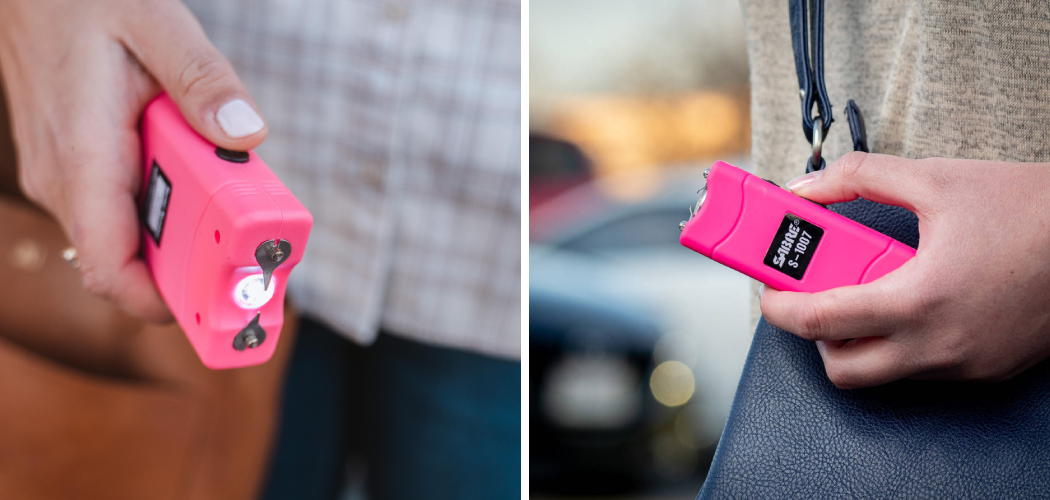Understanding how to properly charge a Taser is crucial for ensuring its optimal performance and reliability. Whether you are a law enforcement officer, security professional, or civilian user, knowing the correct procedure will help maintain the device’s battery life and ensure it is ready for use when needed.
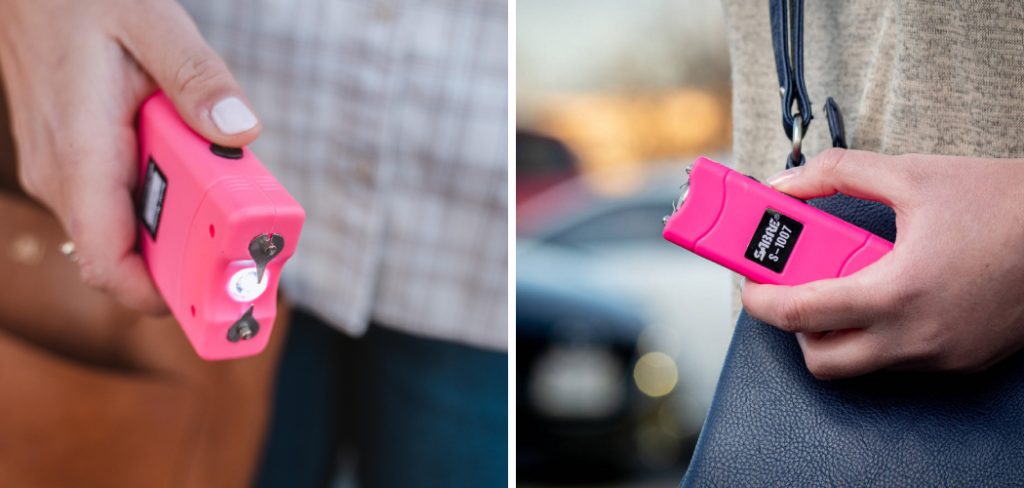
This guide on how to charge a taser will provide you with step-by-step instructions on how to safely and effectively charge your Taser, highlighting key considerations and best practices.
What is a Taser?
A Taser is a brand of electroshock weapon used for incapacitating a person by delivering electric current. It is commonly used by law enforcement agencies, security personnel, and in some cases, civilians for self-defense. The device works by firing two small barbed darts connected to the main unit by conductive wires. Upon making contact, these darts deliver an electrical charge that disrupts voluntary muscle control, resulting in temporary immobilization.
Tasers are designed to provide a safer alternative to lethal force, offering a means to subdue an individual without causing permanent harm. However, their use requires proper training and understanding of the potential risks and legal implications.
Why is it Important to Properly Charge a Taser?
Ensuring your Taser is fully charged before use is essential for its proper functioning and effectiveness. A fully charged Taser has the necessary power to deliver an adequate shock, increasing the chances of successful immobilization. Moreover, keeping your Taser properly charged also helps maintain its battery life, ensuring it is ready for use in case of emergency.
It is also worth noting that improper charging can damage the Taser’s battery and reduce its overall lifespan. Therefore, it is essential to follow the correct charging procedure to avoid any potential malfunctions or accidents.
Necessary Equipment:
Before we jump into the charging process, it is crucial to gather all the necessary equipment required for the task. These include:
- A Fully Charged Taser Battery Pack
- The Taser Device Itself
- The Correct Charger (Usually Provided With the Taser Purchase)
- A Power Outlet
- A Charging Cable (If Applicable)
6 Step-by-step Guide on How to Charge a Taser
Step 1: Check the Battery Level
Before you begin the process of charging your Taser, it is important to check the current battery level. Most Tasers are equipped with an LED indicator that illuminates to show the battery status. To check the battery level, turn on your Taser and look for the battery indicator light.
If the indicator shows a low battery or if the light does not turn on, it is time to charge your device. Regularly checking the battery level will help you ensure that your Taser is always ready for use when needed.
Step 2: Power Off Your Taser
Before you begin charging your Taser, ensure that the device is completely powered off. This is a vital safety step to prevent any unintentional discharge or electrical issues during the charging process. To power off your Taser, locate the power switch and turn it to the “off” position.
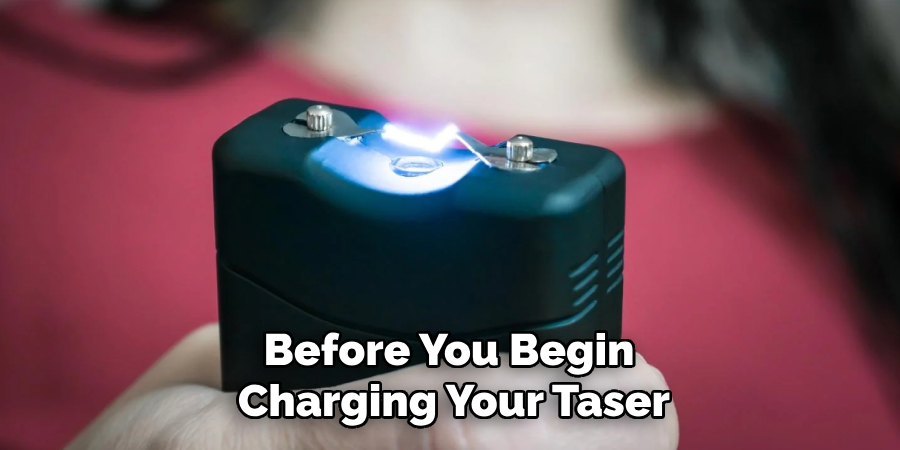
Confirm that the device is no longer active by checking that the LED indicator light is not illuminated. Once you are certain that the Taser is off, you can proceed with the charging steps.
Step 3: Connect the Charger
With your Taser powered off, locate the charging port on the device. This port is typically found on the side or bottom of the Taser, depending on the model. Once you have identified the correct port, take the provided charger and insert the plug into the charging port. Ensure that the connection is secure and that the charger is fitted properly to avoid any interruptions during the charging process.
Next, plug the charger into a suitable power outlet. It is important to use only the charger that was provided with your Taser or a compatible one recommended by the manufacturer. Using an incorrect charger can damage the battery and render the device inoperative. Once connected, the LED indicator on the Taser may illuminate or blink to signify that the charging process has begun.
Step 4: Wait for the Taser to Fully Charge
The charging time for a Taser may vary depending on the model and battery level. However, on average, it takes about four hours for a Taser to fully charge. During this time, the LED indicator light will remain illuminated or blink until the device is fully charged.
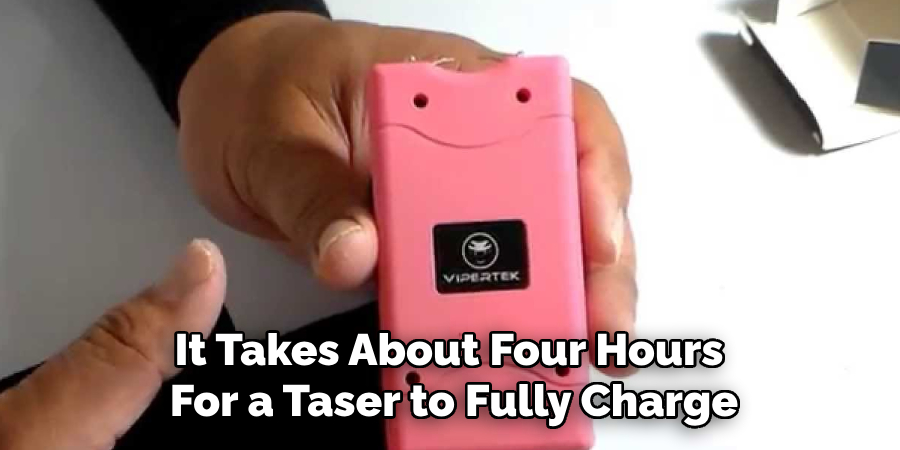
It is highly recommended that your Taser is charged completely before disconnecting it from the charger. Partially charged Tasers can result in decreased performance and may even reduce its overall lifespan.
Step 5: Disconnect the Charger
Once the Taser has fully charged, as indicated by the LED light changing color or turning off depending on the model, it is time to disconnect the charger. Carefully unplug the charger from the power outlet first to ensure safety. Then, gently remove the charging cable from the Taser’s charging port.
Be sure not to pull the cable forcefully as this could damage the port or the cable itself. Once the charger is removed, inspect the Taser to ensure everything is properly in place and that there is no visible damage to the device or the charger. Your Taser is now charged and ready for use.
Step 6: Store the Taser Properly
After your Taser has been fully charged, it is important to store it properly. Keep your Taser in a secure and safe location, away from heat or moisture that may damage the device. Additionally, make sure that the charging port and any other openings are free of dust or debris to avoid any potential blockages that could affect its performance.
Do not leave your Taser plugged in for extended periods as this could damage the battery and decrease its overall lifespan.
Following these steps on how to charge a taser will help ensure that your Taser is always fully charged and ready for use when needed. As with any weapon or self-defense tool, it is crucial to handle Tasers responsibly and follow all necessary precautions to avoid accidents or harm. Stay safe!
Additional Tips
Regular Maintenance
Perform regular maintenance checks on your Taser to ensure it remains functional and safe to use. This includes checking the condition of the battery, inspecting the device for any signs of wear or damage, and ensuring the prongs and other components are clean and free from obstructions.
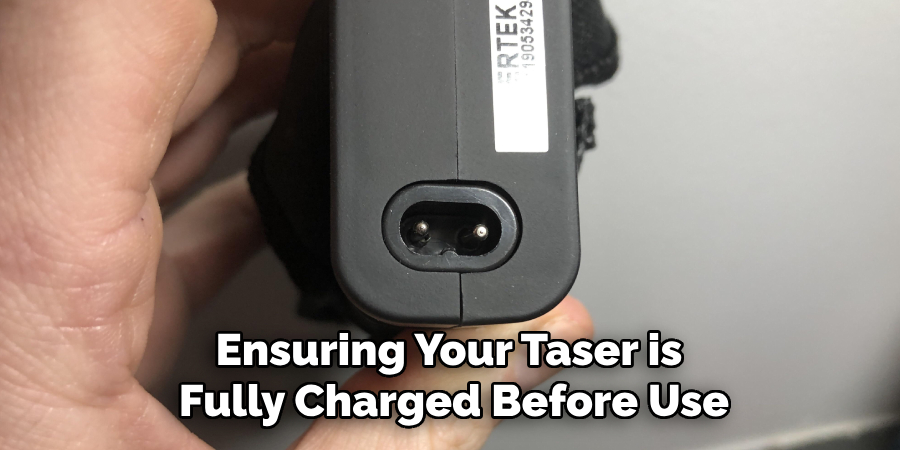
Use Protective Cases
Consider using a protective case for your Taser. This helps prevent physical damage when the device is not in use and can protect it from environmental factors such as dust and moisture.
Practice Proper Usage
Familiarize yourself with the operation and handling of your Taser. Practicing in a controlled environment ensures you are comfortable using the device in an emergency situation. Some Tasers come with training cartridges that allow for safe practice without delivering a high-voltage charge.
Stay Informed on Legal Regulations
Laws and regulations regarding the use of Tasers can vary significantly by region. Stay informed about the current legal status and any changes in regulations in your area to ensure you are compliant with local laws. Additionally, participate in any available training programs provided by your local authorities or the Taser manufacturer.
Monitor Battery Health
Over time, batteries can lose their capacity to hold a charge. Monitor the health of your Taser’s battery and replace it if you notice a significant decrease in performance. Using a fresh battery ensures that your Taser performs optimally when needed.
Stay Updated with Manufacturer Guidelines
Manufacturers often release updates and instructional guides to ensure the optimal functioning of their devices. Stay updated with any new guidelines, firmware updates, or product recalls issued by the Taser manufacturer.
By following these additional tips, you can ensure the longevity and effectiveness of your Taser, providing you with a reliable means of self-defense. Always prioritize safety and responsibility in every aspect of Taser ownership and usage.
Frequently Asked Questions
Q: How Often Should I Charge My Taser?
A: It is recommended to fully charge your Taser after each use, and before storing it for an extended period. If you have not used your Taser in a while, it is advisable to check its battery level and charge it if necessary before carrying it for personal protection.
Q: Can I Use My Taser While It Is Charging?
A: No, you should never use your Taser while it is charging. Doing so can cause potential safety hazards or damage the device’s battery. Always make sure that your Taser is fully charged before using it.
Q: How Long Does a Taser Battery Last?
A: The lifespan of a Taser battery may vary depending on usage and maintenance. However, on average, a Taser battery can last up to five years with proper care and regular charging. It is important to follow the manufacturer’s recommendations for battery replacement to ensure your Taser’s optimal performance.
Q: Can I Use a Different Charger to Charge My Taser?
A: No, it is not advisable to use a different charger to charge your Taser. Only use the charger provided with your device or one recommended by the manufacturer to avoid potential damage to the battery or device.
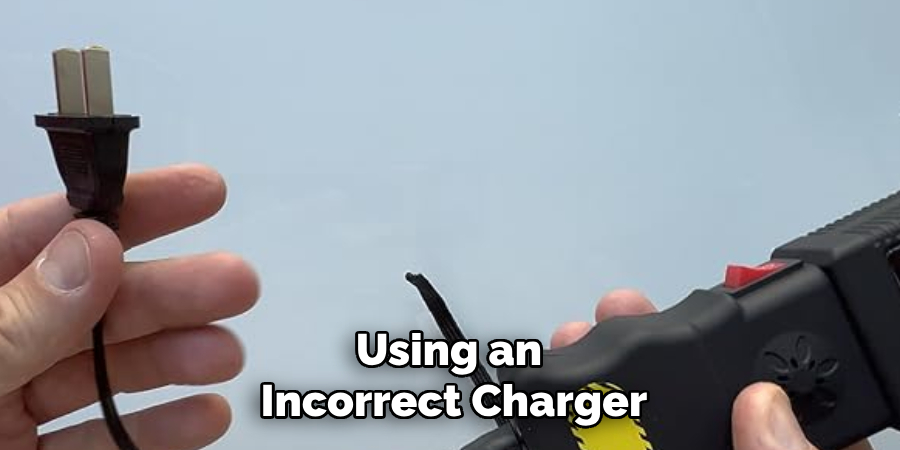
Using an incorrect charger can also potentially void any warranty on your Taser. It is always best to stick with the designated charger for optimal performance and safety. Additionally, make sure that the charging cable and port are compatible before connecting them, as using an incompatible cable may cause damage as well.
Conclusion
Properly charging and maintaining your Taser is paramount to ensuring its effectiveness and longevity. By following the detailed steps outlined in this guide on how to charge a taser, you can ensure that your Taser is always ready for use in any emergency situation. Remember that a fully charged device not only boosts performance but also prolongs the battery life, reducing the risk of malfunctions.
Additionally, always handle your Taser with care, follow the manufacturer’s instructions, and consider the legal implications of its use. Responsible usage and maintenance will not only enhance the device’s reliability but also contribute to your personal safety and the safety of others. Stay informed, stay prepared, and most importantly, stay safe!

